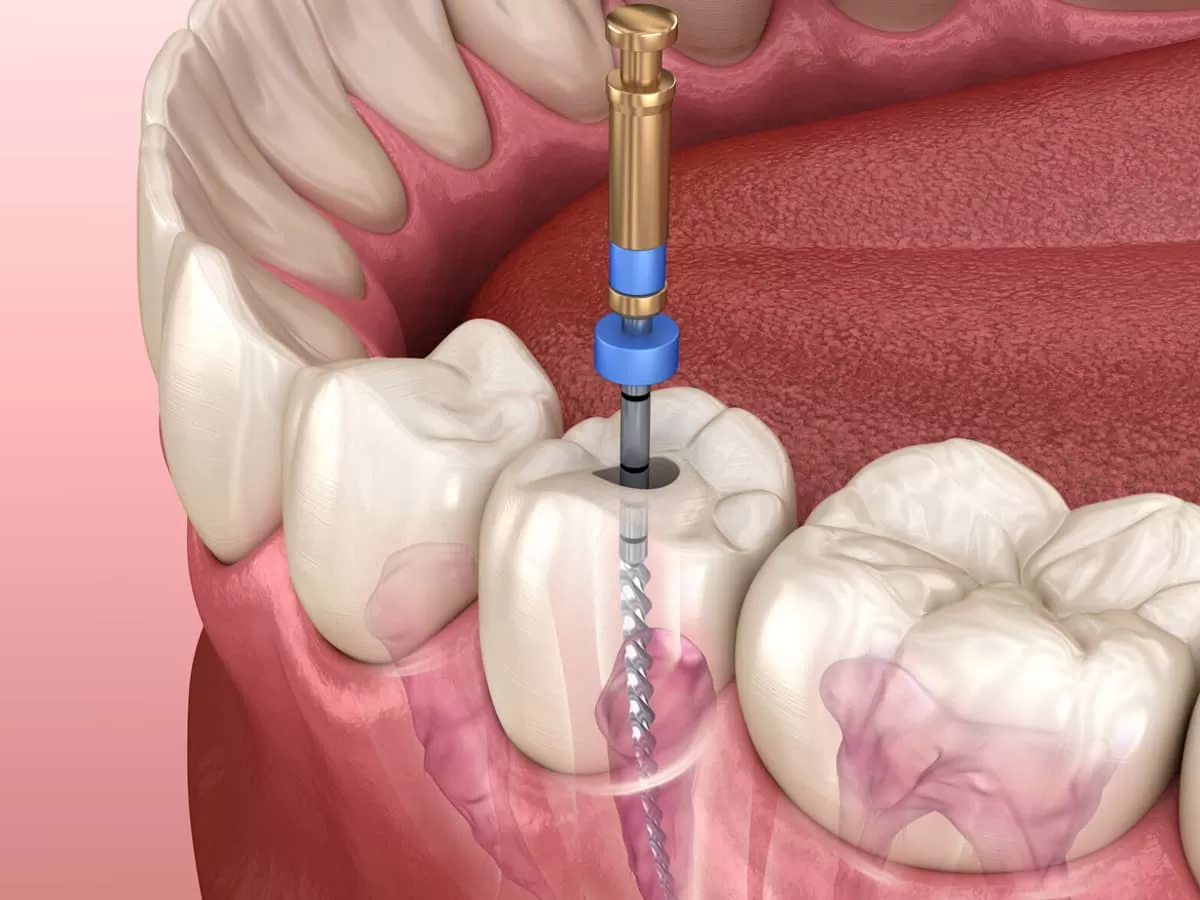
Key facts
- A root canal treatment is a dental procedure that involves the removal of infected soft tissue (dental pulp) inside a tooth.
- It’s also known as endodontic treatment.
- You may need more than one visit to your dentist or dental specialist (endodontist) for this treatment.
- Root canal treatment can save a tooth that would otherwise need to be extracted (come out).
What is a root canal treatment?
A root canal treatment is a dental procedure that removes the infected dental pulp inside the middle of a tooth. It’s also called endodontic treatment.
Each tooth has a canal system which goes from the crown (top surface) to the root. A tooth has up to 4 canals containing dental pulp. The dental pulp is made up of connective tissue, nerves and blood vessels.
When you have a root canal treatment, damaged or infected dental pulp is removed from inside your tooth.
After the pulp is removed, the space is cleaned and disinfected, filled and sealed.
The surface of your tooth that is used for chewing may also be replaced with a filling or a crown.
Root canal treatment can be done by your regular dentist or an endodontist.
When might I need a root canal treatment?
If you have a badly infected or damaged tooth, root canal treatment can save the tooth. Otherwise, you may need to have it extracted (removed).
Your tooth may have become infected or damaged by:
- decay
- wear and tear
- an injury
- a crack in your tooth
- gum disease
- cracked fillings
- repeated dental work that can injure the dental pulp
When your tooth is damaged, bacteria can get inside the tooth and multiply. This can lead to an infection or abscess in the root of your tooth.
Antibiotics alone do not work to cure root canal infections.
It’s best to save your tooth if possible. It works better than an artificial tooth for biting and chewing.
What are the symptoms of a root canal infection?
The signs and symptoms of a root canal infection include:
- severe tooth pain that does not respond to pain medication
- severe toothache when biting or chewing
- swollen and tender gums
- pus around an infected tooth
- sensitivity to hot or cold that lasts after the hot or cold item has gone
- a loose tooth
- swelling of your face or neck
- your tooth gets darker in colour
It’s also possible to have deep tooth decay without pain or discomfort. You might find out about the decay or infection when your dentist or endodontist does an x-ray.
When should I see my dentist or endodontist?
If you have severe pain or swelling, make an urgent appointment to see your dentist. The dentist might refer you to an endodontist if it requires specialist treatment.
What happens during a root canal treatment?
Root canal treatment generally requires more than one appointment.
Your dentist or endodontist will:
- take an x-ray of your tooth and the area around it
- use a local anaesthetic to numb the area around your tooth
- place a sheet of rubber called a dam over your tooth to keep the area clean and dry
- drill a hole in the top of your tooth to remove the pulp
- clean and disinfect the canals inside your tooth
- seal your tooth with a temporary filling if more than one session is needed
When the cleaning treatment is finished in one or more appointments, your dentist or endodontist will fill the canal space with a sterile material called gutta percha.
A filling or crown is fixed to your tooth by your dentist to seal it and stop further infection by bacteria.

What do I need to do after a root canal treatment visit?
It’s important to return for all root canal treatment sessions. Your molars (chewing teeth) are put under a lot of pressure when chewing, so they need to be strong. Having a crown fixed over your tooth helps to protect it.
Once the crown is in place you can eat and clean your teeth like normal.
Complications of a root canal treatment
You may have some discomfort and swelling after the procedure. Ask your dentist or endodontist if you should take pain medicine.
Your tooth may look darker afterwards.
Your tooth may be at risk of cracking, but the crown will help to protect it.
What are the benefits and risks of a root canal treatment?
After root canal treatment is complete your tooth should no longer give you pain.
Root canal treatment lets you keep your real tooth. If your tooth is removed, you may need further treatment to replace it. Root canal treatment can also help protect your other teeth from wear and tear.
Root canal therapy appointments can take up to one hour per session. You will need to have a local anaesthetic to make sure there is no pain during the procedure.
Talk to your dentist or endodontist about the costs of a root canal treatment.
What are the alternatives to a root canal treatment?
If you have a badly damaged or infected tooth, the alternative to root canal treatment is to have your tooth removed. Discuss your options with your dentist or endodontist.


